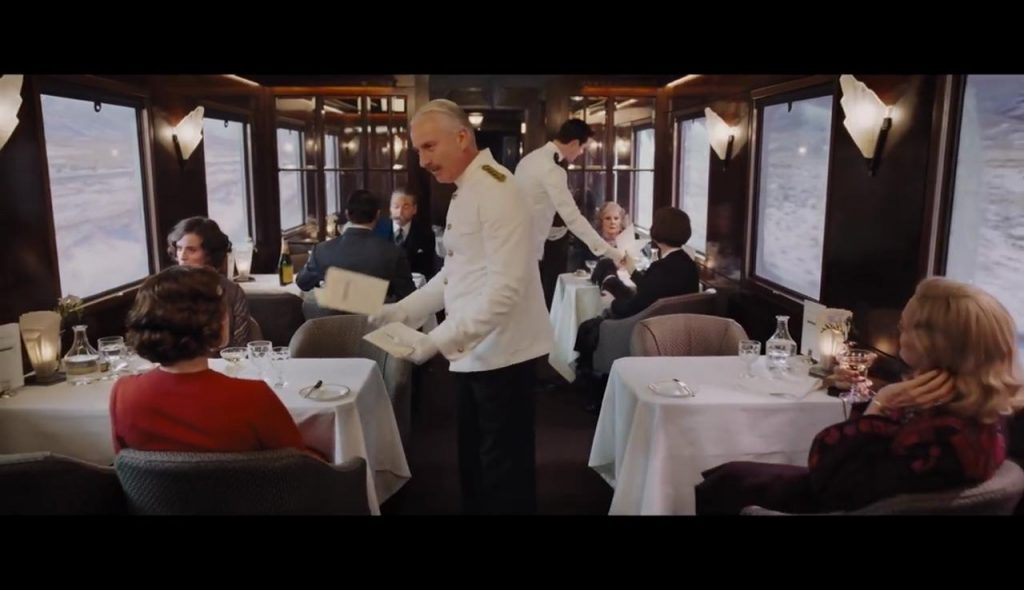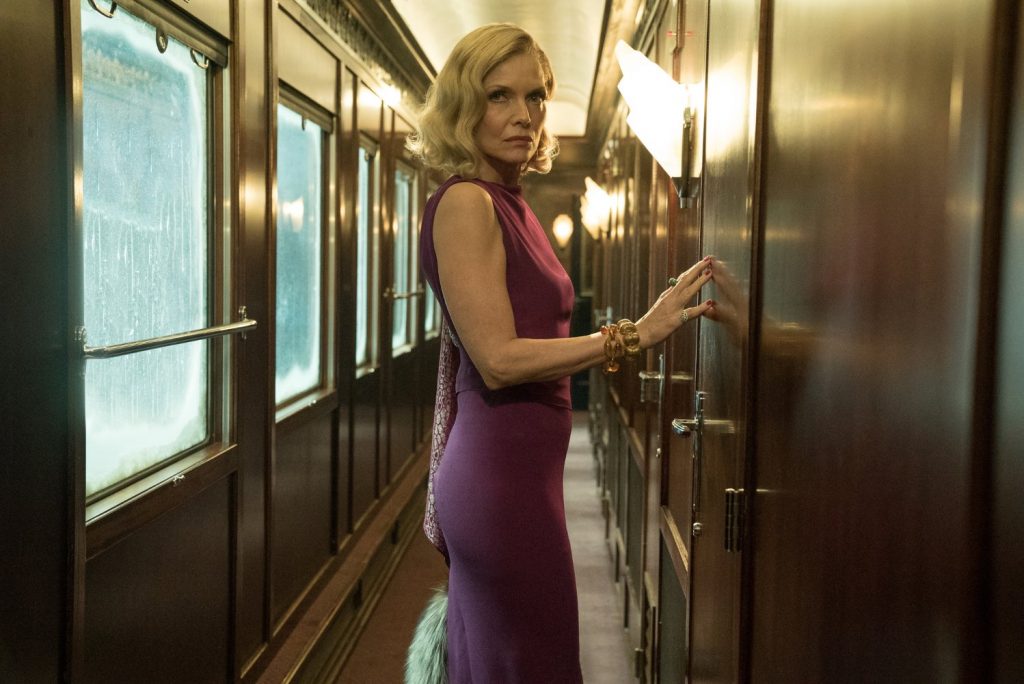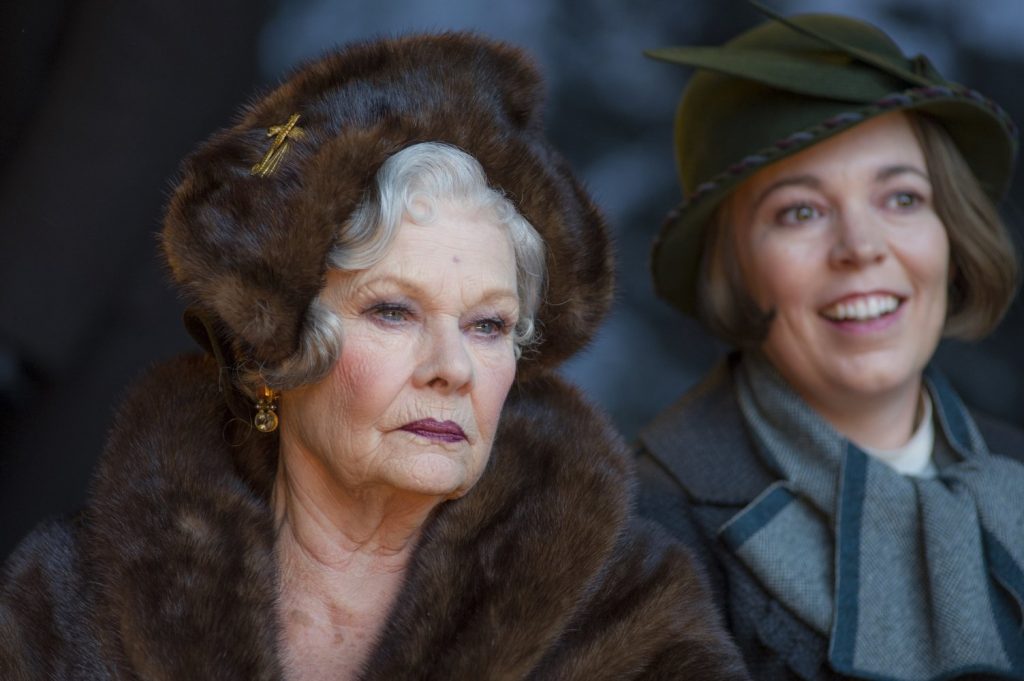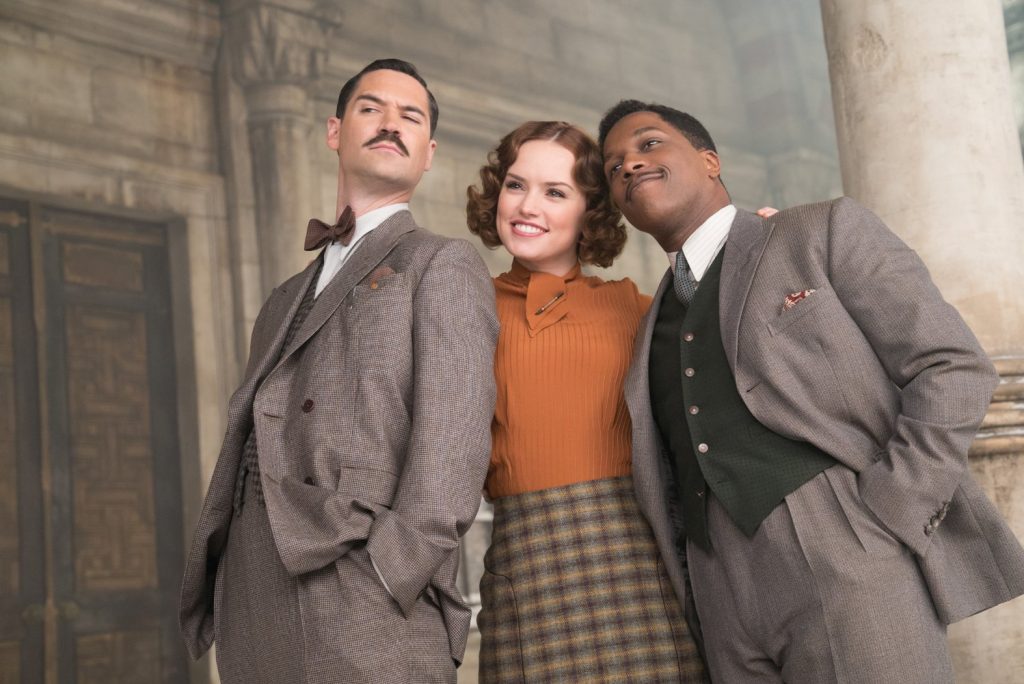
Photo courtesy: Twentieth Century Fox
We sat down with Michael Green, screenwriter for the latest remake of Murder on the Orient Express, to talk about the mystery genre and what writers can learn from Agatha Christie.
Everyone loves a good mystery. It’s no surprise Murder on the Orient Express has gotten yet another remake. Kenneth Branagh both directs and stars as the beloved Poirot, the famous Belgian detective with the funny mustache. But the rest of the cast is just as magical, from Judi Dench to Michelle Pfeiffer to Willem Dafoe, the cast simply sparkles.
Let’s take a look at the six main steps to writing mystery.

Photo courtesy: Twentieth Century Fox
No. 1 – It starts with a murder
Part of the fun of watching a mystery is engaging in the intellectual exercise of trying to figure out the whodunnit. In many ways, it’s like solving a puzzle. And like all good procedural entertainment, the audience looks forward to learning the answer at the end.
Though Green has written Blade Runner 2049, Alien: Covenent, Logan and the TV show American Gods, the prolific writer is new to writing mystery.
“I don’t have a background in procedural writing in any way which is unusual for someone who comes from television,” says Green. “Blade Runner 2049, which I wrote before Orient Express, is the only thing I’ve ever written that had a case to follow and Orient Express even more so, but with mystery as its engine. It was new for me, but I enjoy putting myself in situations I’m not sure I can succeed in.”
No. 2 – Create an engaging detective
Poirot is clever, loveable and quirky. He’s someone you want to spend time with. But given that he’s been around for so long, he’s also become iconic. Perhaps the most well-known version of Poirot comes from David Suchet’s portrayal in the long-running BBC show Agatha Christie’s Poirot. People feel so loyal to Suchet’s version, in fact, they’ve started the hashtag #NotMyPoirot on Twitter to protest Kenneth Branagh’s portrayal.
Luckily, Green doesn’t mind the hashtag. “I think it’s great when people love a character with all four chambers of their heart. They mean it, they’re fans, but we’re fans, too. The opportunity was to find new shades within Poirot that haven’t been explored, but still making him be Poirot. We never wanted to make him anything other than what he is. But there was still plenty to mine and that came in conversations with Kenneth Branagh. He had a lot he thought he could bring to it. It kept getting enhanced the more we worked on my original draft together.”

Photo courtesy: Twentieth Century Fox
No. 3 – Create suspects
One thing Agatha Christie does so well, is create a group of suspects that in many ways, hide their true selves and motives. Everyone is a suspect, from the Countess (Lucy Boynton), to the Butler (Derek Jacobi), the Gangster (Johnny Depp), all are capable of anything.
“As much as the mystery is front and center in Agatha Christie, the appeal to me is that it’s a character piece,” says Green. “It’s the closest thing I’ve ever written in screenplay form to a play where so much needs to be visual and lush and make sure there’s much to see. We knew it was going to be largely about the characters in a room together speaking about something we were compelled by.”
For Green, though, there was one character who stood out from the rest: the Princess, played by Judi Dench. “It’s hard not to love any character played by Judi Dench because I just love Judi Dench so much!”
No. 4 — Create either an open or contained setting
Because the murder takes place on a train, the setting is contained. All the suspects are in one location and it’s unlikely the killer will be able to escape. According to Green, the train is, “both a condition and a character. One of the things that’s most appealing about Murder on the Orient Express is that it’s such a classic concealed room case. The train creates the condition but the sealed room is an art piece. It’s based on something that was an aspirational reality back then. Not only could you traverse Europe in a matter of days, you could do it in such style.”
The character Bouc (Tom Bateman) says it best, “There’s something about a group of tangled strangers crushed together in a small space, mixing boredom with anonymity, and a constant gentle rocking.”

Photo courtesy: Twentieth Century Fox
No. 5 — Lay out your clues and red herrings
Agatha Christie is a master at giving just the right amount of clues and diversions, never allowing the audience to easily solve a crime. “She’s a master at structure,” says Green. “You can really learn about the care and maintenance of your clues. In reading her, you can take note of your own emotions and notice when you are engaged or not engaged and see if that is a function of expectation when you happen to be reading it.”

Photo courtesy: Twentieth Century Fox
No. 6 — Solve the murder
For Green, he had an unusual challenge when it came to the story’s resolution. Because the book has been around since 1934, many people likely know the ending. But Green insisted on being loyal to Agatha Christie.
“At no point did I want to change the ending of this. You don’t try to out-Agatha Christie Agatha Christie. Especially since this is her most signature and fascinating ending.
“What I did want to do was make the ending register emotionally, not just intellectually. The resolution to that ending was where we could find more to mine. The solution is given but there is something very genteel about procedurals before a certain period when the criminal is caught. They kind of say, ‘Good show, you got me,’ and they are carted off to jail with a sense of fair play.
“In this, we get to see what happens after the killer is named. There are things that must be sorted out after because the circumstances are so unusual. That allowed us to make sure the conclusion of the case was relevant to the conclusion of Poirot’s journey, that those two things were married.”
Murder on the Orient Express is currently playing in theaters.




3 Replies to "Learn from the best: Murder on the Orient Express’ Michael Green on Writing Mystery"
sam November 13, 2017 (10:15 am)
Being the writer for Blade Runner 2049 is not something that inspires me. That thing was almost entirely devoid of story content and suffered a well-deserved fate.
Jean-Marie MAZALEYRAT November 28, 2017 (9:44 am)
Ridiculous! Monstrous waste in the vein of From Hell, Mortdecai, Mary Reilly… Obviously, Hollywood is still anable to understand the British Touch.
BTW nobody in Great Britain never weared such a Buffalo-Bill moustache or blew hot air in such a hysterical way, especially at the time the movie is set.
Jean-Marie MAZALEYRAT November 28, 2017 (10:59 am)
Ridiculous! Monstrous waste in the vein of From Hell, Mortdecai, Mary Reilly… Obviously, Hollywood is still unable to understand the British Touch.
BTW nobody in Great Britain ever weared such a Buffalo-Bill moustache or blew hot air in such a hysterical way, especially at the time the movie is set.
Which doesn’t minimize the merit of Michael Green. Sorry for the typo.